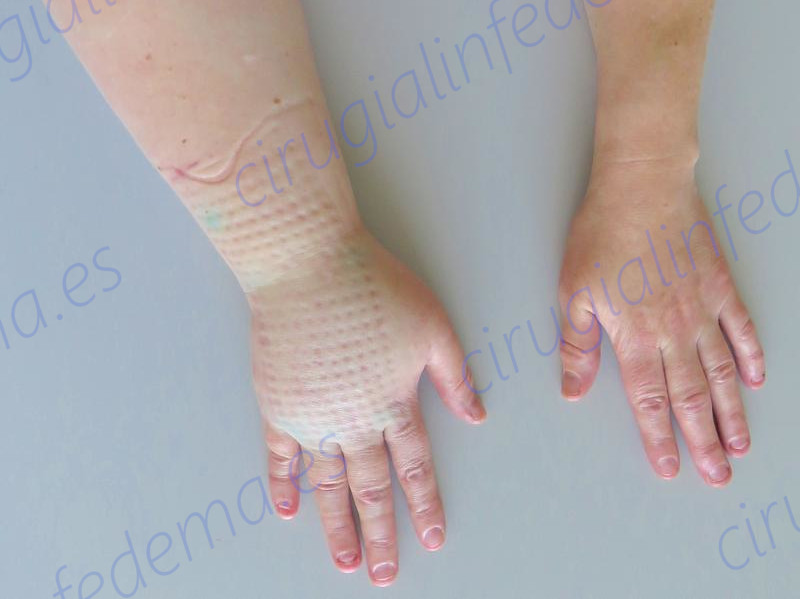
Diagnosis
Diagnosis of lymphedema
The diagnosis of lymphedema is made by:
- Clinical history: temporal correlation between lymph node surgery and increased limb size in secondary lymphedema. In the case of primary lymphedema, the existence of direct relatives with lymphedema.
- Physical examination: measurement of limb perimeter, previous scars, infection, vascular status, etc.
- Lymphography: obtaining radiological images of the lymph nodes and vessels by injection of a contrast agent. Scientific studies show that this test does not define the severity or degree of lymphedema, but only determine whether there is an alteration of the lymphatic system.
- Indocyanine green: Injection of this dye allows to obtain images of the lymphatic vessels. The dye can be seen in real time circulating through the lymphatic system, using a camera with a frequency close to infrared. The study with indocyanine green determines the state of the lymphatic system and is useful for planning the surgery.
Stages of lymphedema
There are four stages of lymphedema according to the patient’s physical examination:
- Stage 0: also called subclinical stage. The patient reports heaviness of the arm or leg, although there is no objective increase in its diameter.
- Stage I: swollen or accumulation of fluid in the limb, which improves with elevation.
- Stage II: constant limb diameter increase. Does not improve with elevation.
- Stage III: Also called elephantiasis. There is a significant increase in the diameter of the limb and trophic changes (great deterioration) of the skin.
At any stage, cellulitis (skin and subcutaneous tissue infection), pain, limitation of movement or thickening of the skin in the affected limb may appear.
If you have any of these symptoms, it is advisable to request an assessment by a lymphedema expert to plan the most appropriate treatment.
Example of grade II lymphedema in the right arm. There is an increase in the diameter of the arm that does not improve with the elevation of the same.

